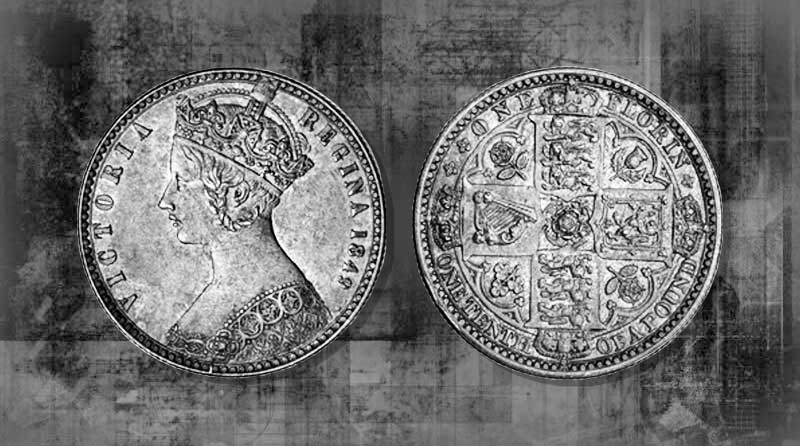
As you may have seen from our latest range of sovereigns, this year marks the 50th anniversary of decimalisation in Britain, in 1971. This ended over a thousand years of iconic coinage and designs. However, talk of decimalisation had started long before this. In 1847, a motion was put to Parliament, and the outcome was the creation of the florin.
The History
Britain had talked of decimalisation as far back as 1682, when Sir William Petty proposed that there should be five farthings to a penny instead of four, to make accounting easier. Sir Christopher Wren, in 1696, suggested something similar in as much as a decimal system based on “a silver noble divided into ten primes and 100 seconds”.
Following the success of decimalisation in the United States of America, after the American Civil War, and similarly in France, after the French Revolution; the decimal conversation in Britain resurfaced. In 1847, a motion was put to parliament by Sir John Bowring, a diplomat and writer, which called for decimal currency with the striking of coins worth one tenth, and one hundredth of a pound.
There were many discussions about what size, design, and even the name of the coin, to be introduced would be, but eventually an agreement was made. Fitting conveniently into the existing monetary system, being worth two shillings or one tenth of a pound, in 1849, the first British florin was put into circulation.
The “Godless Florin”
The obverse of the first florin showing Queen Victoria wearing a crown, was designed by the great Victorian designer William Wyon, whilst the reverse was the design of Scottish painter, William Dyce, showing crowned cruciform shields, with the nations four emblems in its angles.
The design on the obverse of the florin was notable for two reasons. Firstly, it was the first time in over two hundred years that a crowned monarch appeared on British coinage. But more notably, the Latin inscription on the obverse omitted the phrases “Dei Gratia”, meaning “By The Grace Of God”, and “Fidei Defensor” meaning “Defender of the Faith”. This led to the coin becoming known as the “Godless Florin”.
This design proved very unpopular and, in 1852, a new florin was struck. Although it was by the same designers, the inscriptions this time were in Gothic script with its date being in Roman numerals. The omissions in the Queen’s title from the original florin were also corrected.
Further Designs
In 1887 the “Jubilee florin” was released. The design showed an older Queen Victoria on the obverse, and the reverse was slightly changed to show sceptres between the shields, with a Garter Star in the centre.
When Edward VII ascended to the throne in 1901, his florin was designed by chief Engraver of the Royal Mint, George William de Saulles. The obverse showed the King facing to the right, while the reverse showed a windswept Britannia, holding a shield and trident.
From 1911 to 1926, George V reverted back to a similar design to the 1887 florin. A slight change from 1927 to 1936 by English artist George Kruger Gray saw the crowns on the reverse removed from the shields and placed on the sceptres instead, with the appearance of the denomination “One Florin”.
Although coins for Edward VIII reign never went into circulation, due to the King abdicating within a year of becoming King, a design was created, again by Kruger Gray showing the King facing left on the obverse, which he believed to be his most flattering side. The reverse showed a crowned rose with a thistle and shamrock on either side.
King George VI retained this design for his florins, minted each year from 1937 to 1951, with a slight alteration; the reverse showing a “G” and an “R” below the thistle and shamrock, respectively. In 1949 the inscription “IND IMP” was omitted from the coins design, to acknowledge India’s independence.
The Final Change
The design was changed once more, before decimalistion, for Elizabeth II’s reign. The obverse depicts Mary Gillick’s portrait of Her Majesty, with the reverse being a joint design by Edgar Fuller and Cecil Thomas, showing a Tudor rose surrounded by thistles, shamrocks and leeks, with the artists initials appearing at either side of the bottom of the Welsh leek.
Decimalisation saw the last florins minted in 1967 and replaced with a coin of equal size and weight with the denomination “Ten New Pence”. This was one of three new coins that were introduced prior to 1971; the others being the Five Pence in 1968 and the Fifty Pence in 1969, which were released to ease the general public into the significant change that was to come in 1971.
Take a look at what sets containing the florin we have available HERE.


